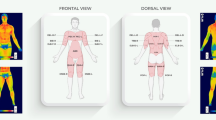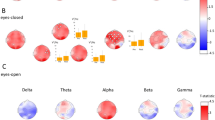Abstract
This study had two major purposes: (1) To determine if severely and moderately retarded adults could be trained in progressive muscle relaxation (2) To determine if skin temperature biofeedback could be used to provide physiological evidence for the relaxation response through increased skin temperature in the fingers.
The authors worked with five retarded adults at a day treatment center in New York City. The clients were taught progressive muscle relaxation. Biofeedback measurements were recorded before and after each training session. The results show that the majority of the subjects benefited from relaxation training, as demonstrated by behavioral observations and physiological data.
Similar content being viewed by others
References
Ayre, J.Sensory integration and learning disorders. Los Angeles: Western Psychological Services, 1973.
Bandura, A. Self-efficacy: Toward a unifying theory of behavioral change.Psychological Review, 1977, 84, 191–211.
Chace, M. Dance as an adjunctive therapy with hospitalized mental patients.Bulletin of the Menninger Clinic, 1953, Vol. 17.
Chace, M. The necessary attitudes of the dance therapist in the therapeutic community.American Dance Therapy Monograph #1, 1971.
Evan, B.Packet of pieces by and about Blanche Evan. Boulder, Co.: Blanche Evan, 1978.
Foreman, E. The use of relaxation therapy in the treatment of alcoholism.American Journal of Dance Therapy, 1978, Vol. 2, 29–30.
Harvey, J.R. The potential of relaxation training for the mentally retarded.Mental Retardation, 1979,17, 71–76.
Jacobson, E.Progressive relaxation, Chicago, Illinois: University of Chicago Press, 1938.
Lowen A.The physical dynamics of character structure. New York, N.Y.: Grune & Stratton, 1958.
Olton, D.S. & Noonberg, A.R.Biofeedback: Clinical applications in Behavioral Medicine. Englewood Cliffs, N.J.: Prentiss Hall, 1980.
Author information
Authors and Affiliations
Rights and permissions
About this article
Cite this article
Moss, S., Anolik, S. The use of skin temperature biofeedback to facilitate relaxation training for retarded adults: A pilot study. Am J Dance Ther 7, 49–57 (1984). https://doi.org/10.1007/BF02579630
Issue Date:
DOI: https://doi.org/10.1007/BF02579630




